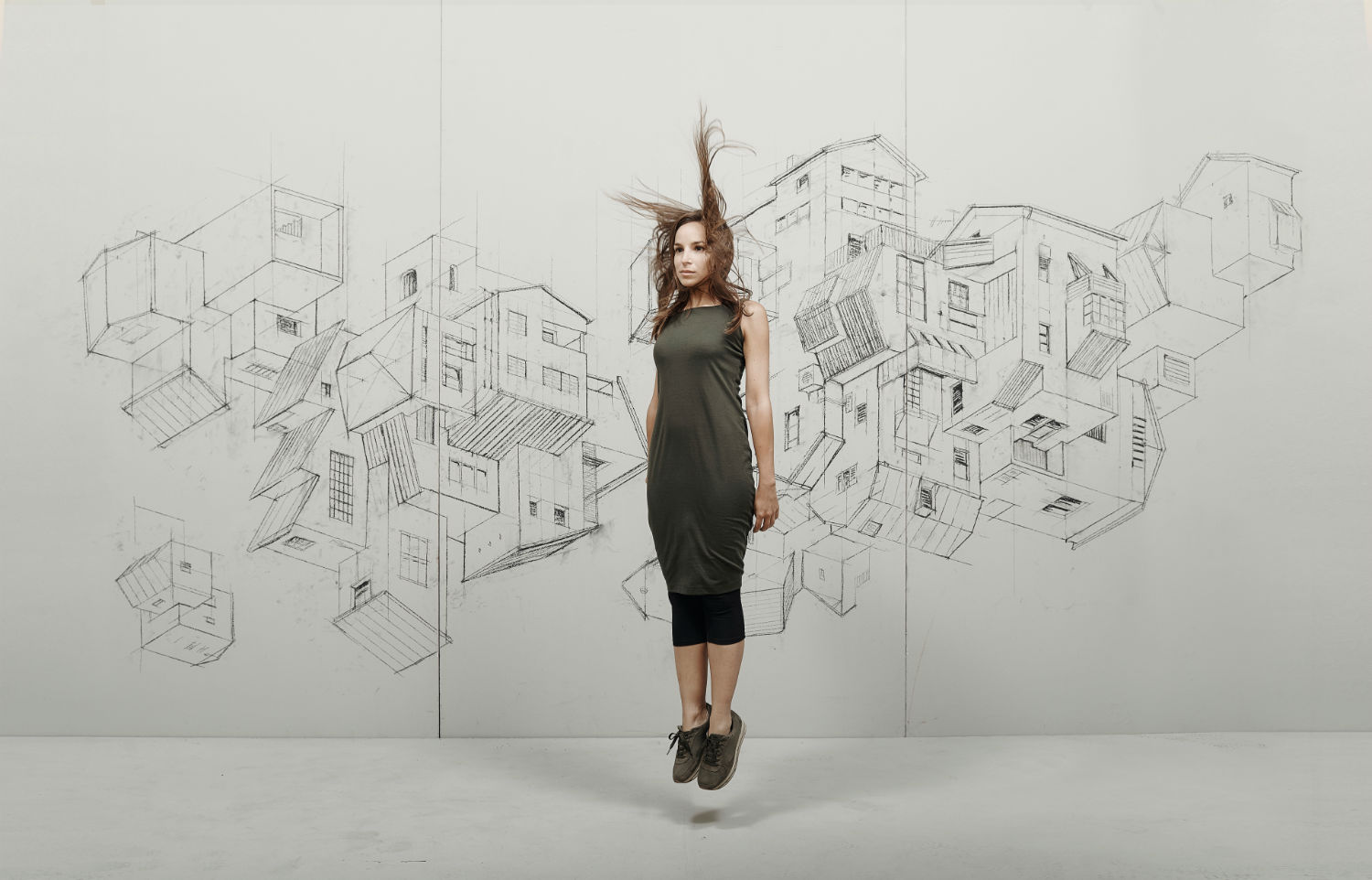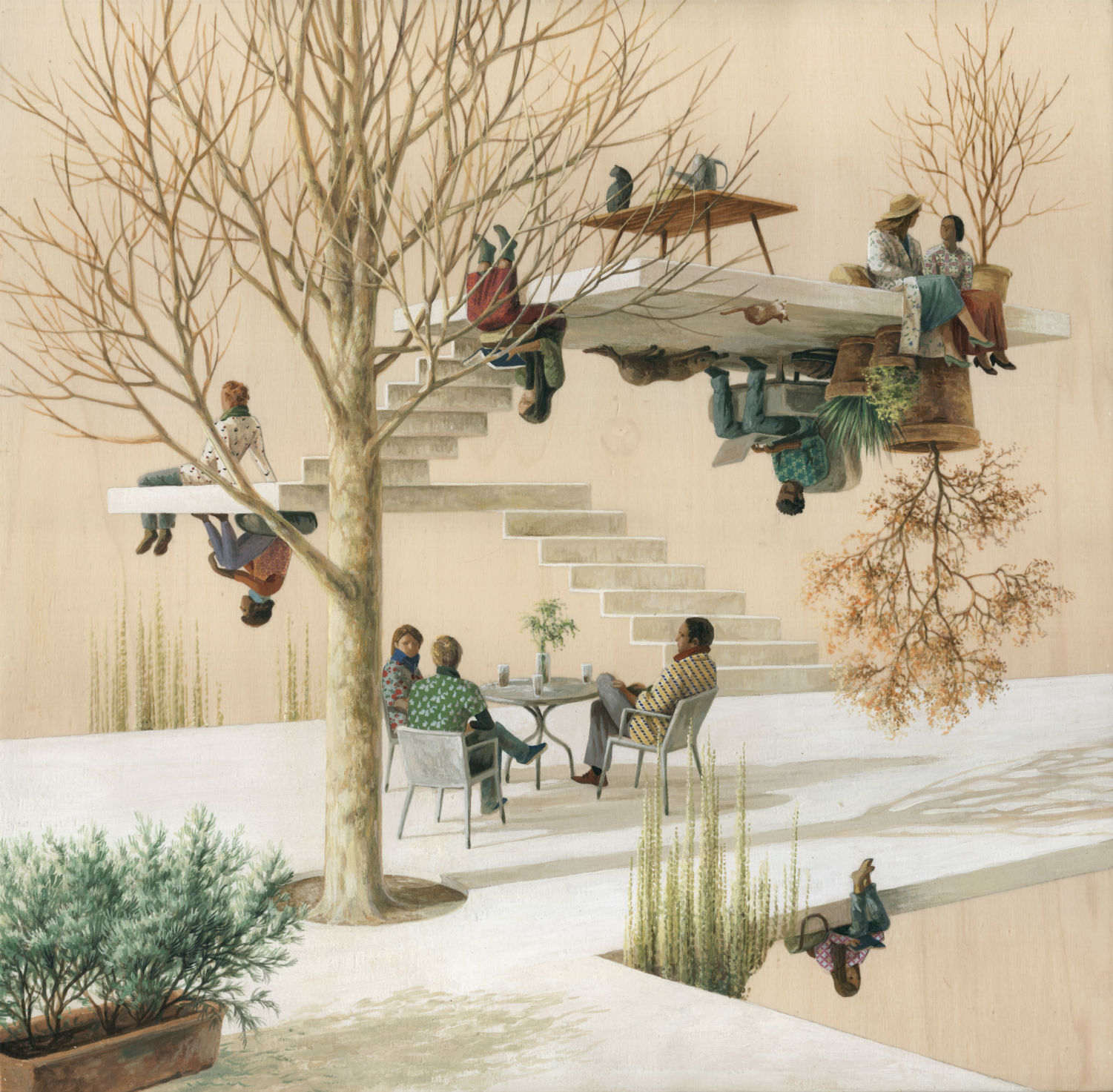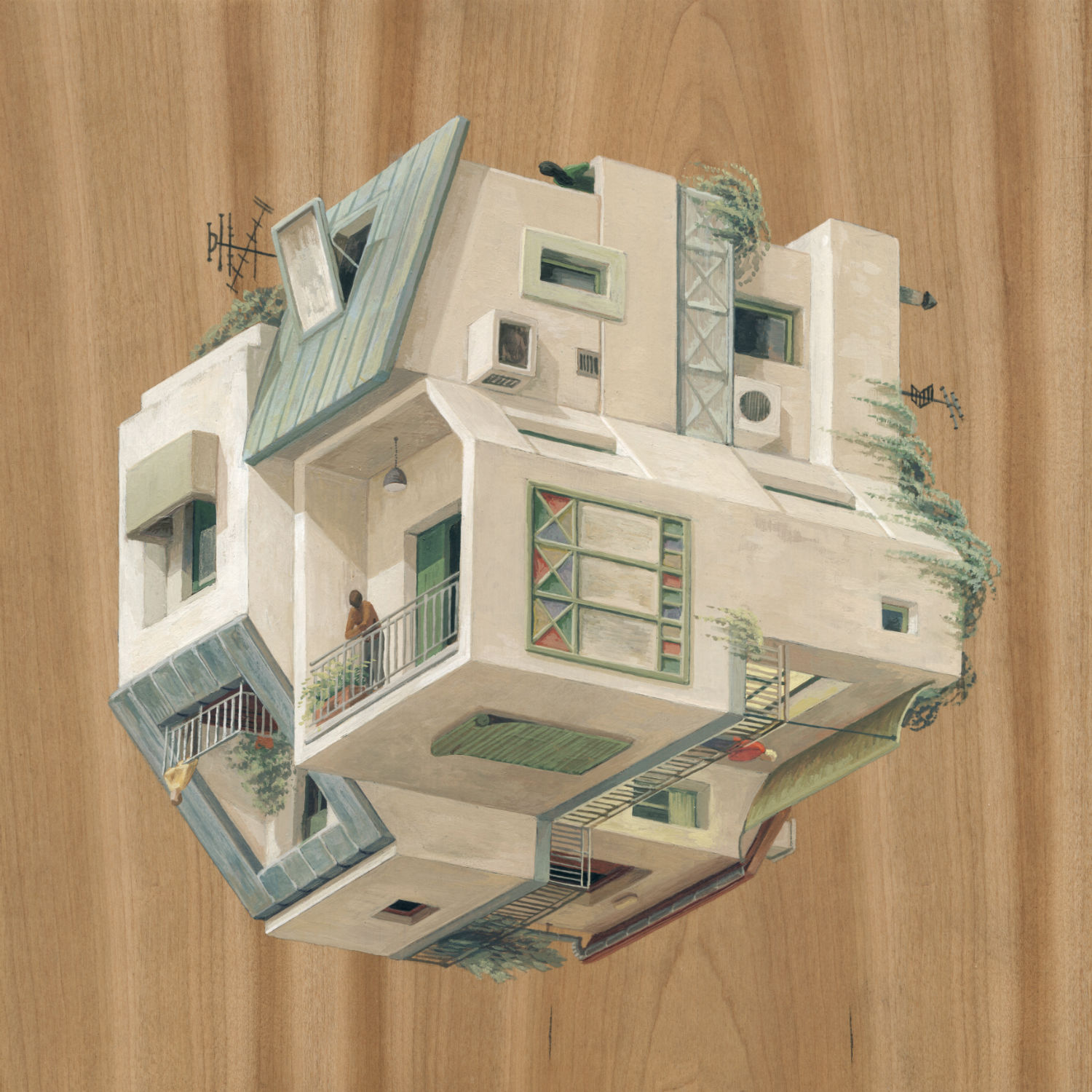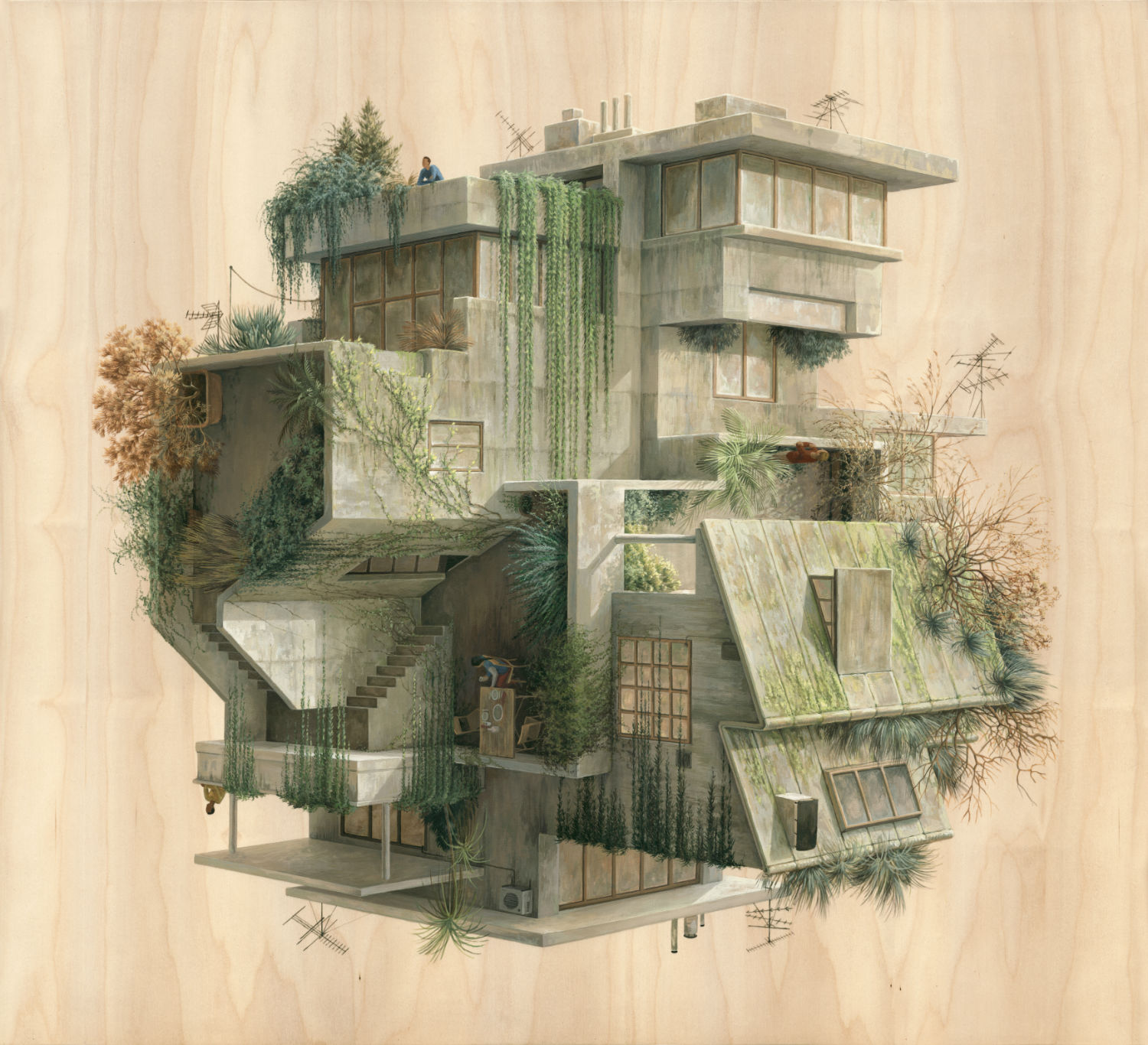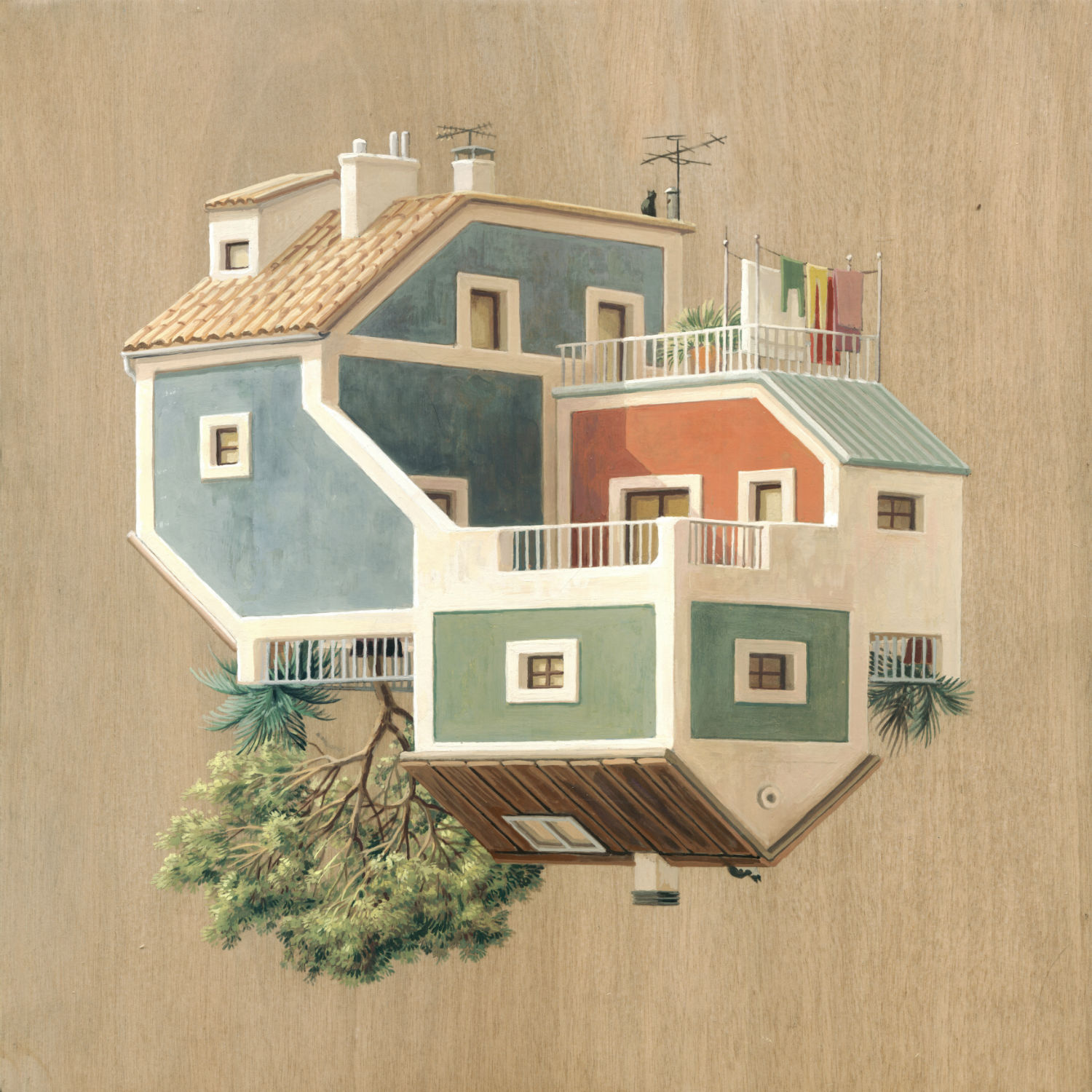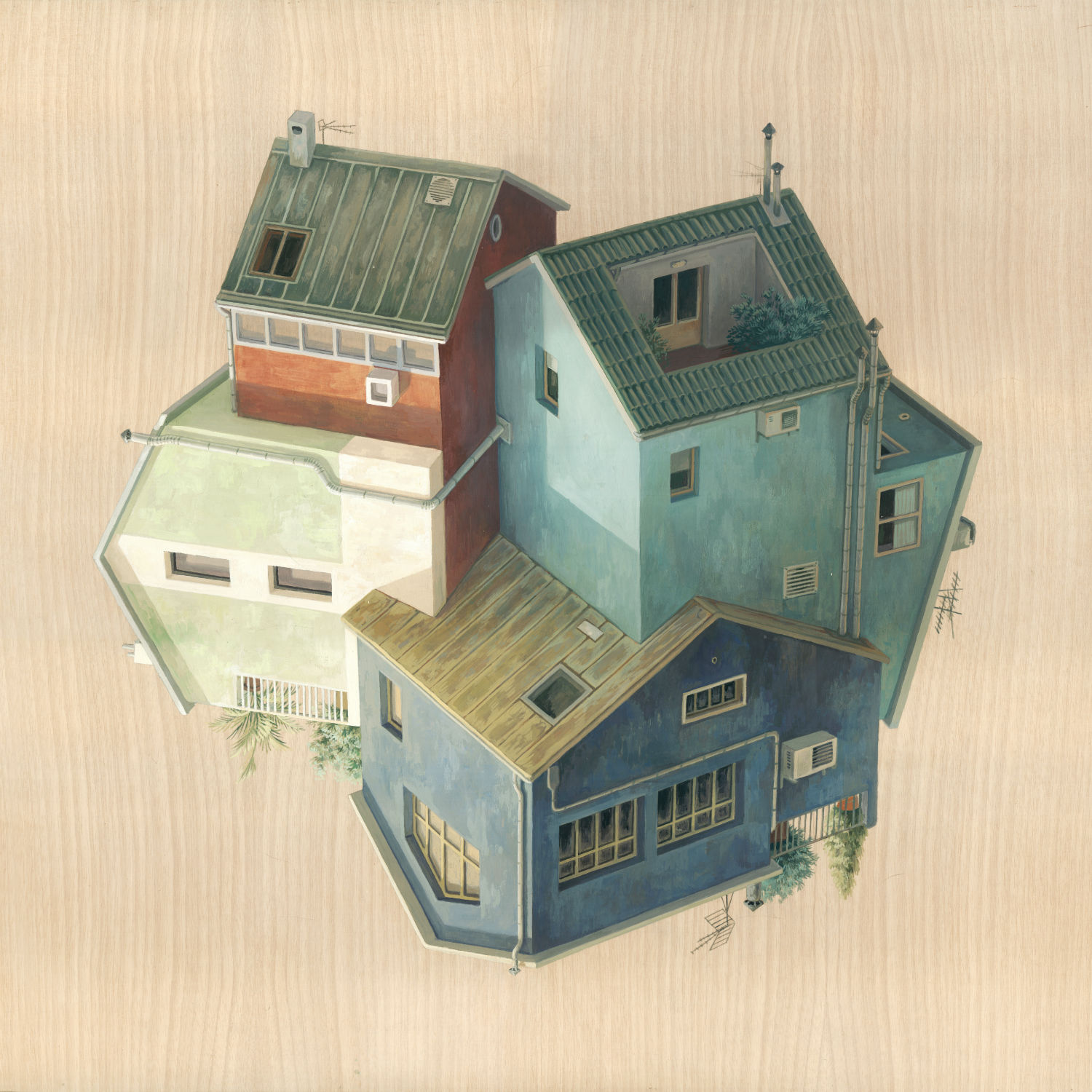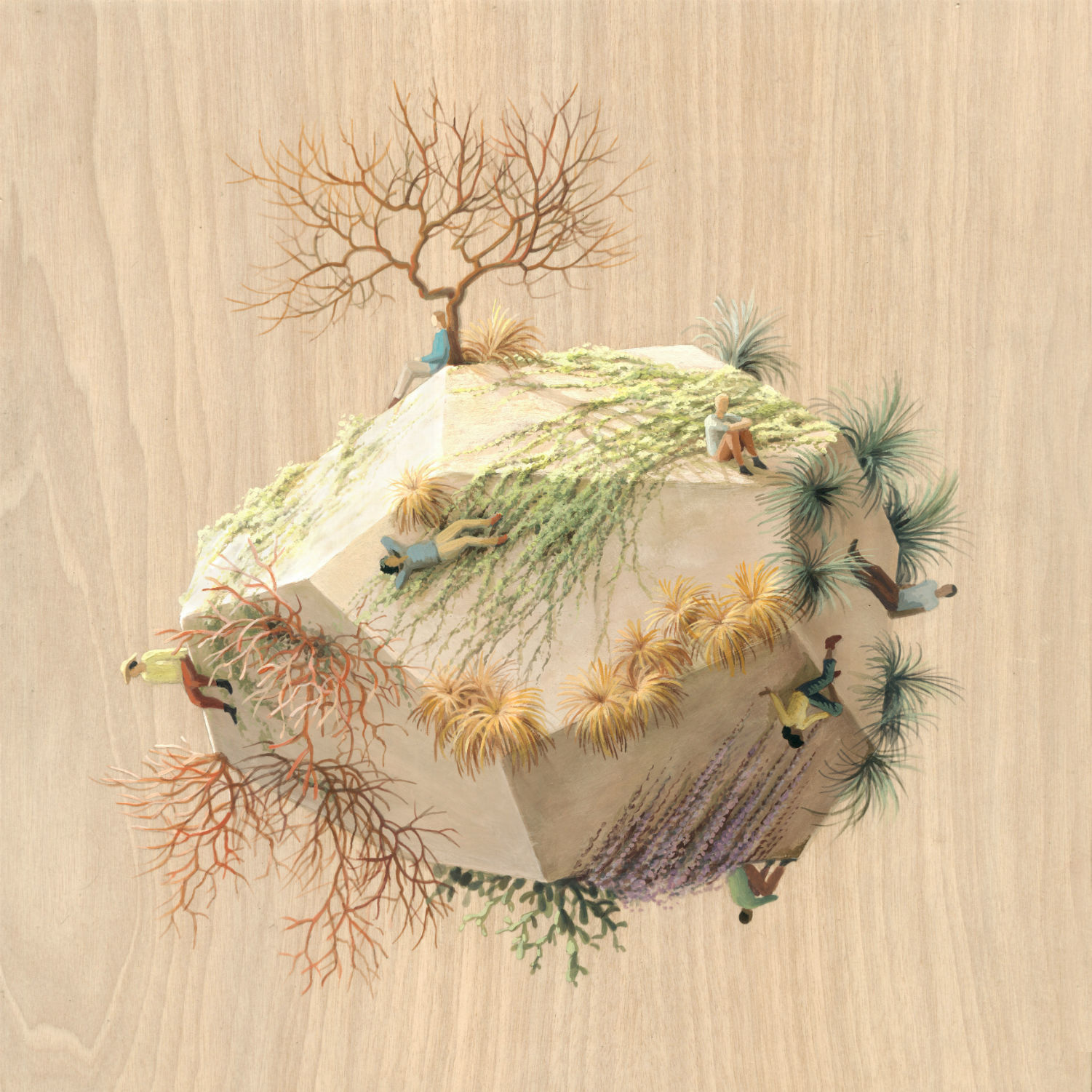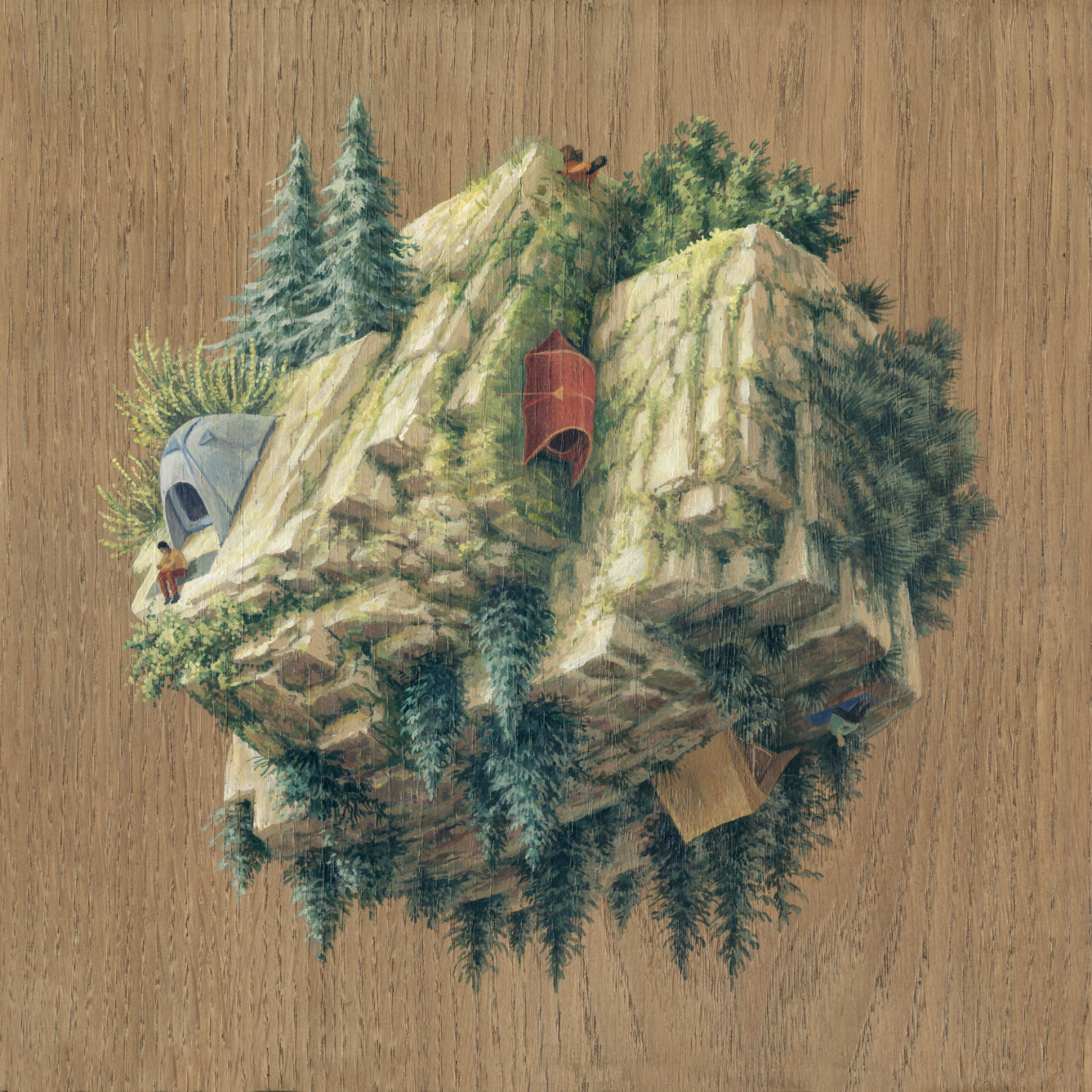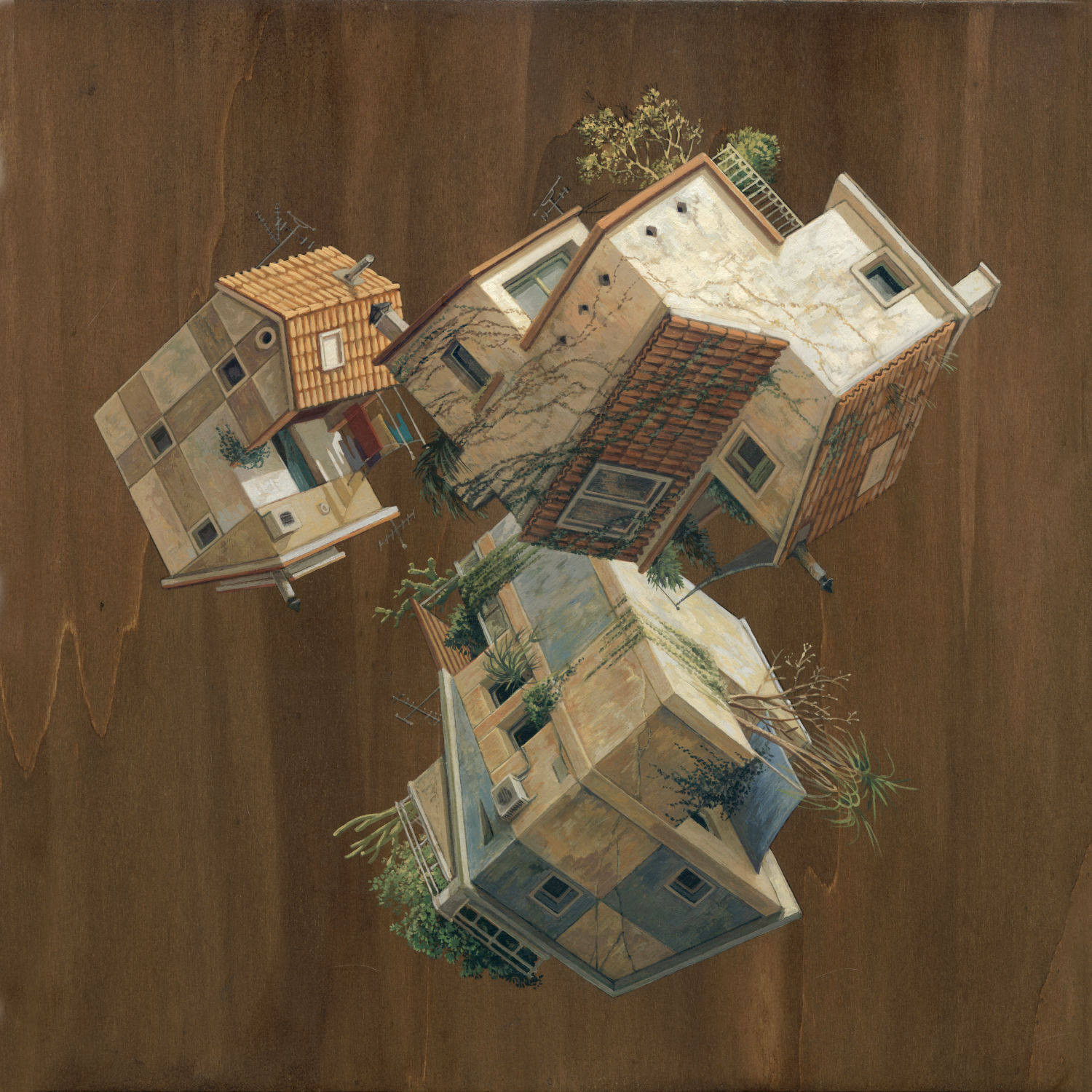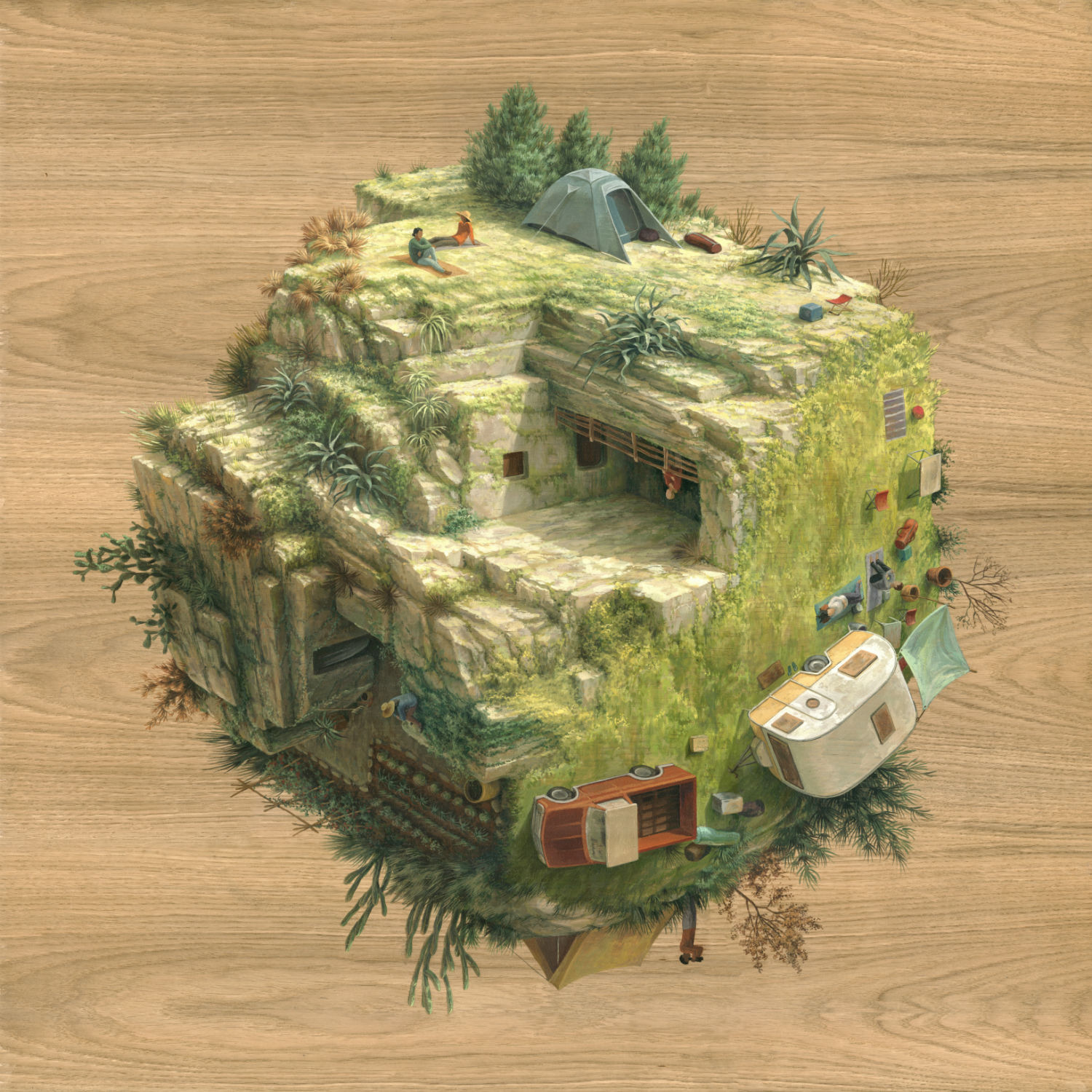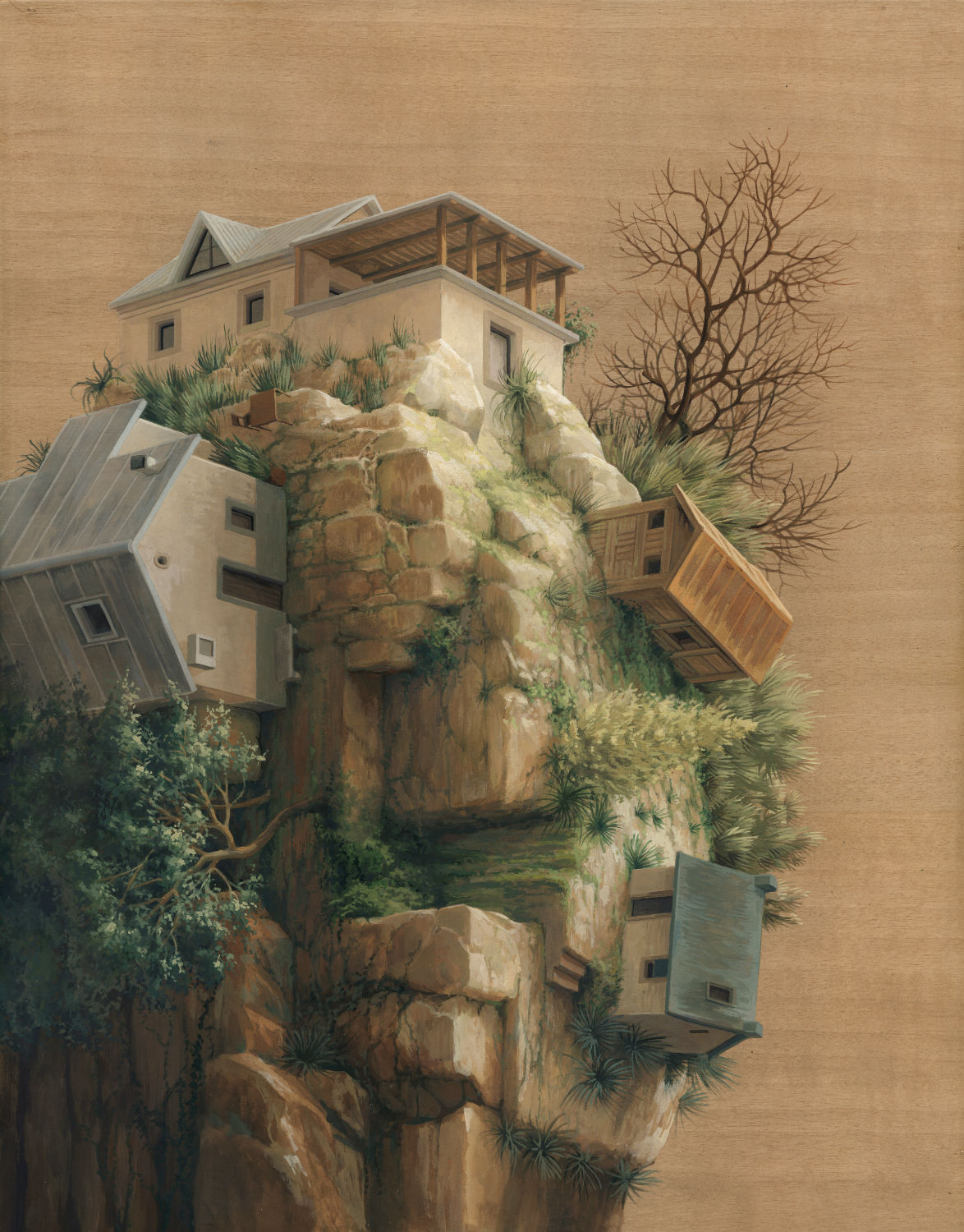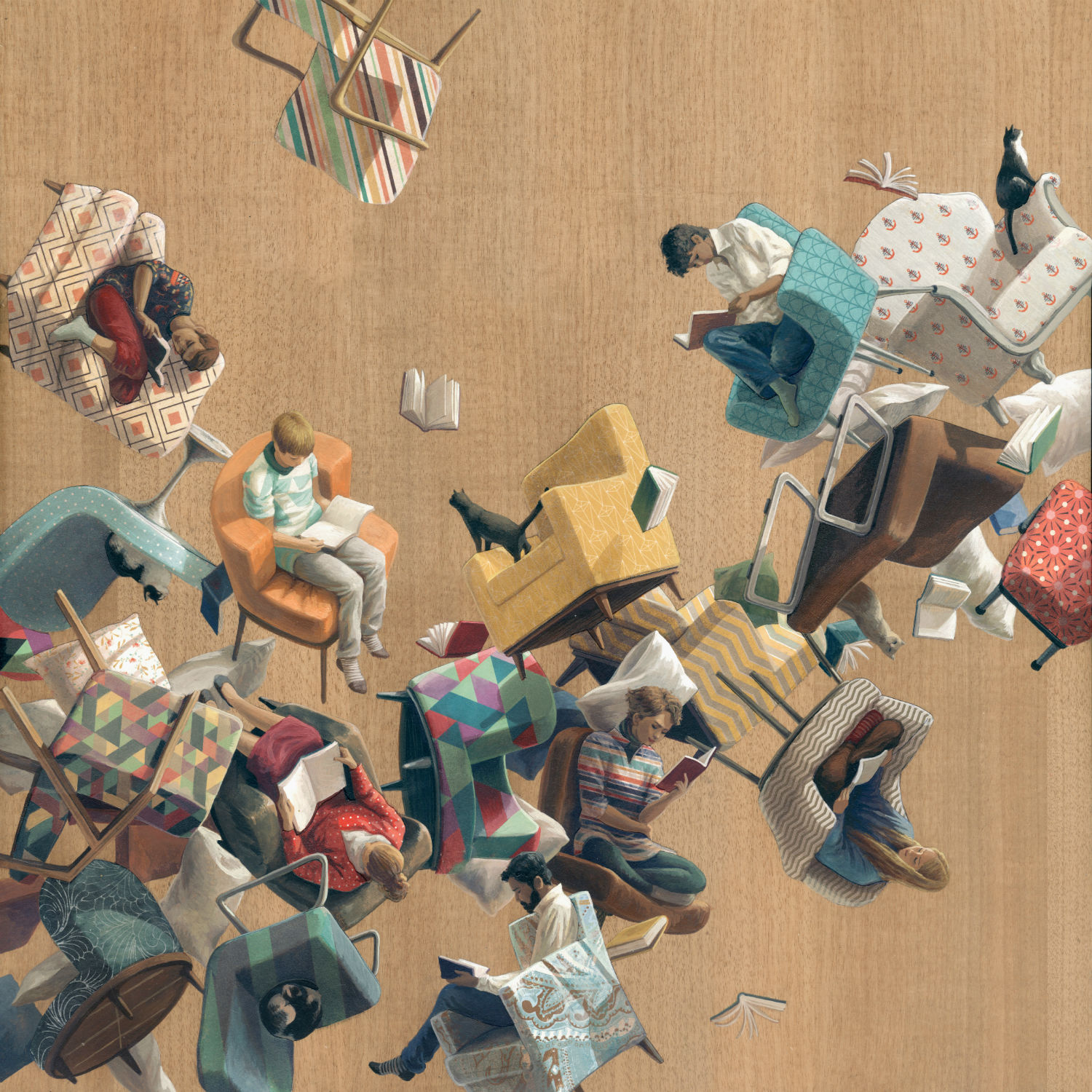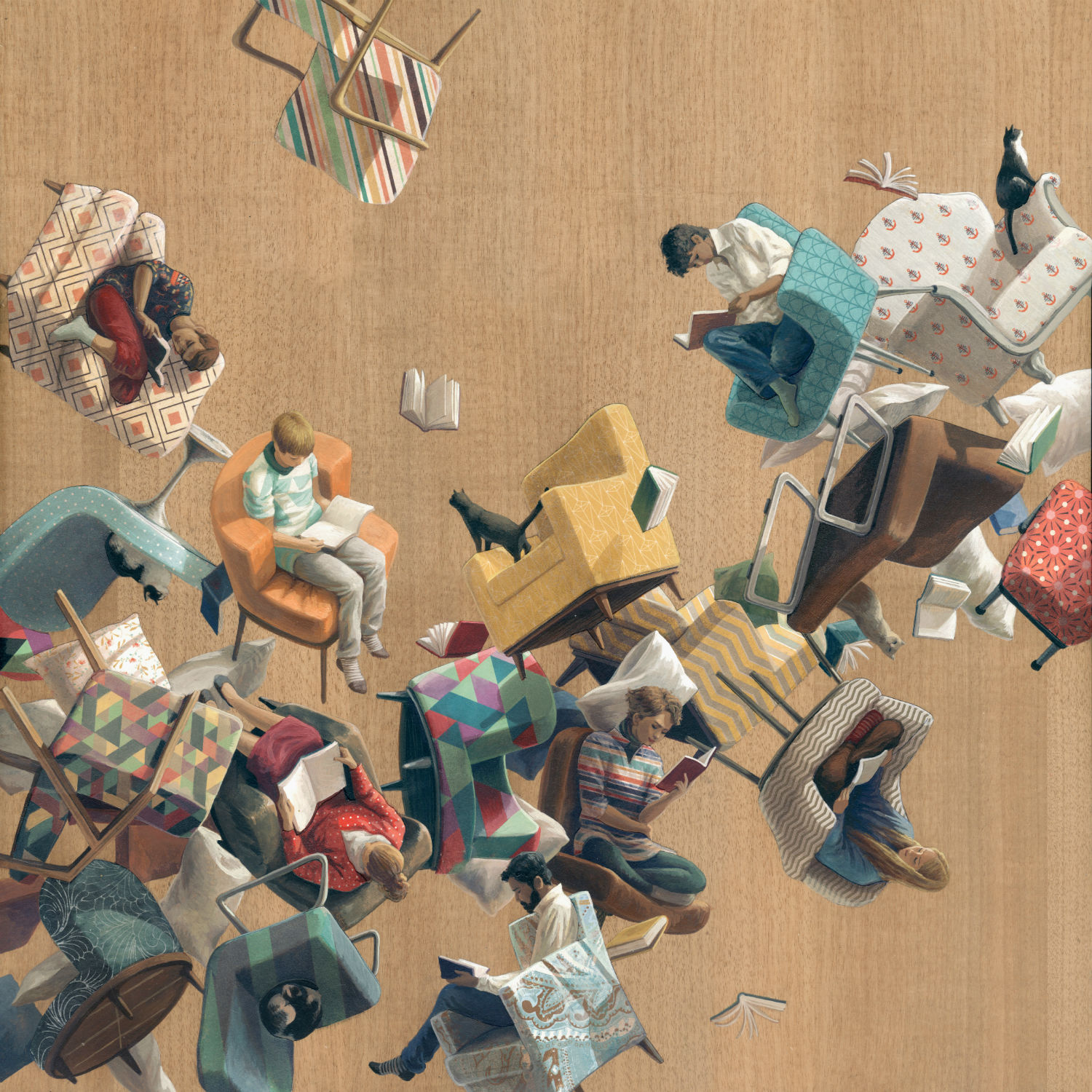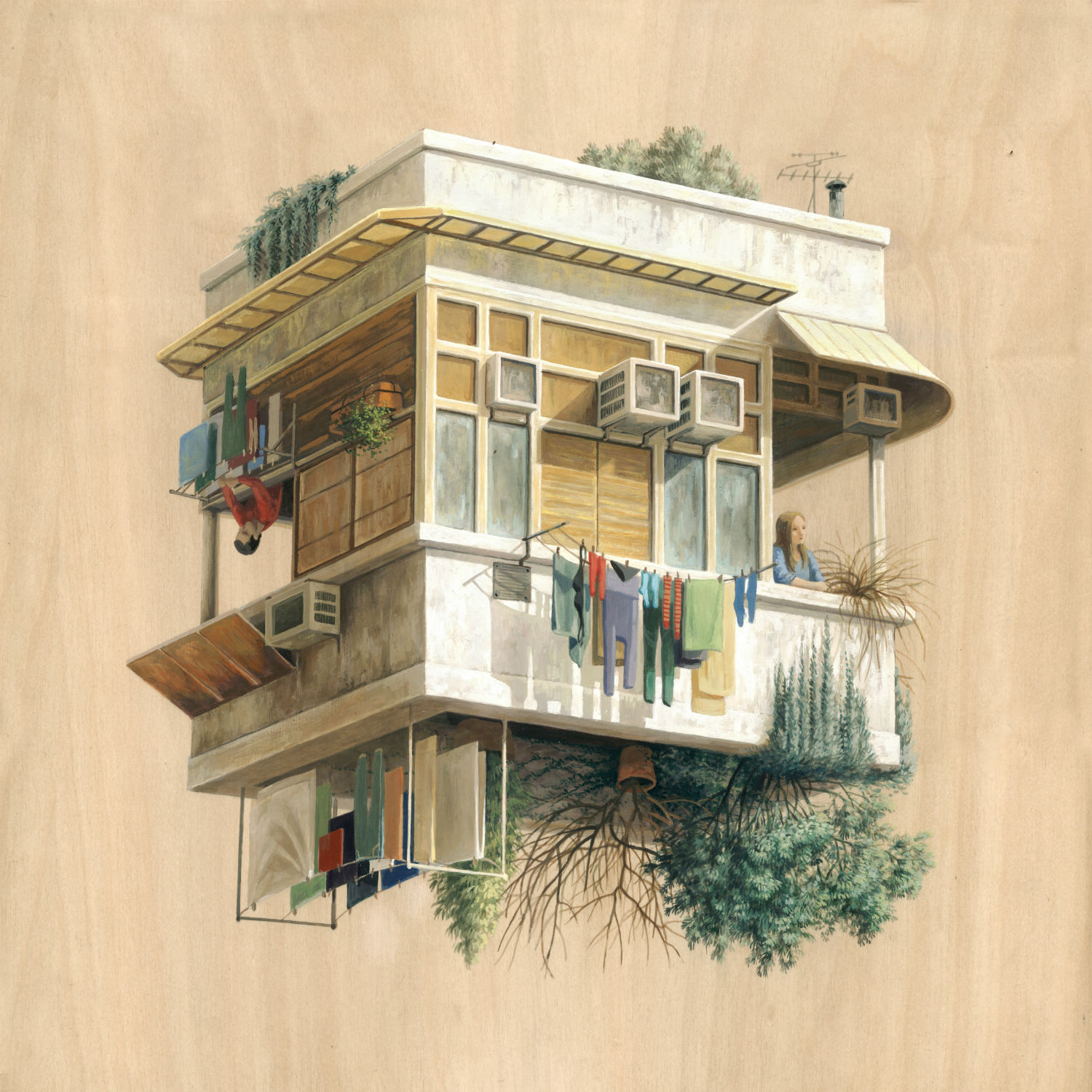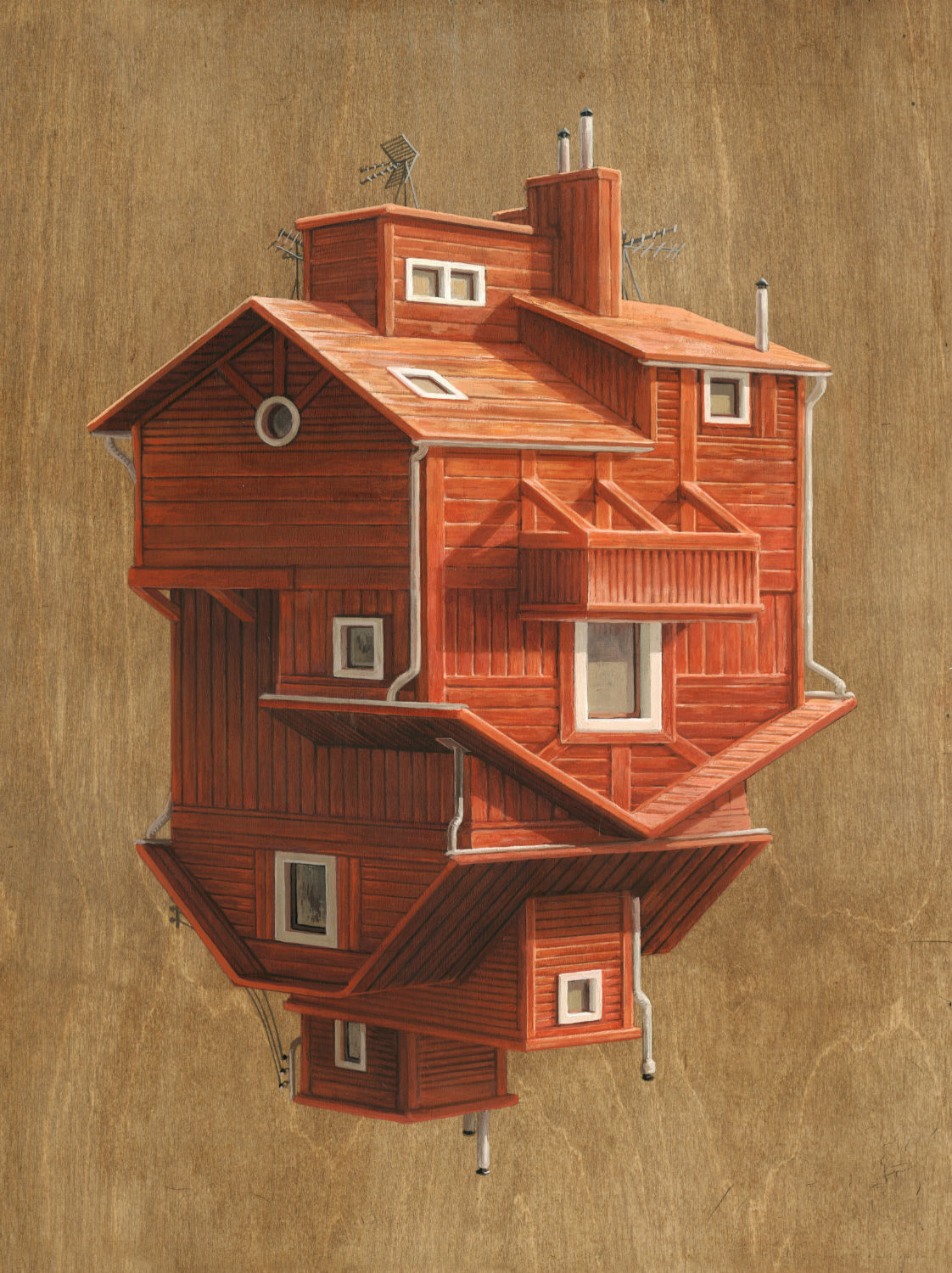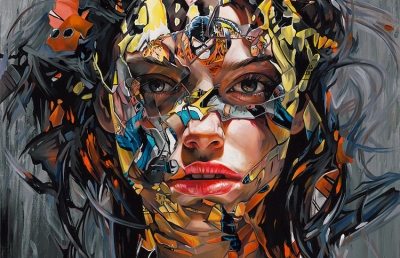Right this very moment, there is someone on the other side of the world who looks just like you doing exactly what you’re doing, and Cinta Vidal is here to remind you of that astounding fact. Capturing what feels like the whole world in just one image, she renders universal feelings that remind us of how similar we all are as humans on this planet, despite our various perspectives. Her process and skills are so painstakingly technical, it’s nearly impossible for her not to achieve perfection.
The fine details of her paintings complement her remarkable experience in scenography (the art of painting monumental theater backdrops). Vidal learned from the greats and is set to be one of them herself, with work that often inspires a unanimous gasp of delight. While others sleepwalk through their own little worlds, Vidal remains acutely aware of the intercontinental collective of humanity.
Read this feature and more in the December 2016 issue of Juxtapoz Magazine.
Kristin Farr: Why do you enjoy that feeling of weightlessness?
Cinta Vidal: I like to play with gravity since it is such a sacred law, and playing with it can have astonishing results. I set elements in different orientations in order to talk about the different points of view we all have in our environments. We will never be able to see all points of view at the same time. They all exist, but we must choose one, and I think this happens constantly in life.
Your recent show was called Gravities. Why is gravity symbolic for you?
Gravities was a big challenge and also a big honor. I am very thankful to Thinkspace Gallery for giving me this chance. All paintings focused on the concept of altered gravity. For me, gravity symbolizes the fact of being well-established in one environment, and that’s why I alter it: because we all have different ways of relating to the world. We forget sometimes, but at the other side of the world, there are people living upside down. We consider it normal nowadays, but it is still extraordinary and astonishing.
Talk about your interest in the idea of being physically close but mentally far away.
I think that it constantly happens in our daily life. We meet a lot of people with different ways of thinking and this separates us, even if we are physically close. I think this is normal and it must be accepted. If we don’t, it can lead to conflicts. Diversity of thought, even if it separates us, is positive. For this reason, when I paint people in altered gravity dimensions, I make them look relaxed, accepting their environment as it is. I like thinking that it is possible for us to meet in the same place with a same state of mind. It happens sometimes, and when it happens, we stop being alone.
I see many people on balconies staring into the distance in your paintings. What are they looking at?
When I walk down the street, I like it when I discover people staring at nothing specific, as if they were looking somewhere beyond. I wonder what they are thinking, and I like to recreate this feeling in my paintings. The people I draw, I don’t know what they are staring at. It is a mystery, and I find it interesting to raise this kind of question for the viewers so that they can answer them the way they prefer.
What are the most personal references in your paintings?
My clearest reference is furniture. Most of it comes from my grandparents’ house. It brings me a warm, homey day-to-day feeling that I hope I can transmit. It also brings me back to a nice time, which belongs to my memories now, and that is why I make furniture fly through the air.
Have you painted people you know into your work?
I don’t usually paint people that I know. They are all anonymous. However, I did once include a friend of mine in a painting while she was traveling for three months, and since I missed her, I painted her wearing a backpack on top of some stairs, staring at the horizon.
Where do you live?
I live in a village, with a slower rhythm than in Barcelona, the closest city. I like my village because it is peaceful and homey, but I also like going from time to time to Barcelona where I have a studio and many friends, and there is also much more cultural activity.

Do you have a nice supportive art community in Barcelona?
Yes. In Barcelona, there is a lot of art movement. I got to know great painters there and we often meet. Day by day, there are more art spaces, where different disciplines are mixed and new proposals can be discovered.
Tell me about your training as a scenographer and how painting backdrops has fed the work you do now.
I started very young as an apprentice in the scenography workshop Castells i Planas, where I slowly learned the art of painting backdrops. The way I paint these days has a lot to do with the technique I learned there: being rigorous with perspectives, chiaroscuros, textures and so on. However, the way I paint is not the sole influence I received from the workshop. I also learned to have discipline and love towards my job. I was lucky because I had great masters, and I am still learning from them.
Why do you choose to paint backdrops while standing on top with a long brush?
This is a technique that began in the big Italian scenography workshops. It is done like that because it is more comfortable, as backdrops are very big and painting them vertically would be complicated. For weeks and weeks you would have to constantly go up and down using scaffolds. However, if you set a backdrop horizontally, you can go through it easily. Also, long paintbrushes are needed so that painters don’t have to bend down in order to paint.
Have you always made studio paintings or did you transition from scenography to more personal work?
I always painted on my own, even before I started working in scenography. But it was only one and a half years ago that I seriously made the decision to start my own work. The paintings I paint now are the result of mixing my own drawings with the technique I learned in the workshop.
How has your work evolved? What did your earliest paintings look like compared to now?
In the beginning, I did nothing but drawings. Later on, I tried to add color to them, but only plain colors. The effect was rather that of an illustration. It was only two years ago that I tried to apply chiaroscuro effects to my sketches. In my first works, I maintained the drawing lines, but now I don’t. Little by little, my works have become more pictorial and their light more dramatic. I realize that, as time goes on, I give more and more importance to details.
What kinds of details are your favorite to paint, and which elements have you been most focused on lately?
I give a lot of importance to the details because I believe that often the sum of small elements is what brings more paintings to life. I like details because you don’t see them at first glance, you have to look again and pay attention in order to see them all. Spaces are always the protagonists in my paintings, but when I add small human figures or human elements, these environments take on another meaning. One of the details that I often repeat is men (and not women) hanging out clothes. It’s a subtle feminist message and, as a matter of fact, I doubt that anyone has noticed it.
What are the most challenging and most relaxing parts of your process?
Every painting goes through a similar process. I first make a sketch on paper, which is based on vanishing lines. After that, I study the light in order to decide in which place I want to set the shapes. Until this point, everything is quite prepared. It might seem strange, but the most relaxing part starts when I paint the image on wood. Intuition plays a very important role there. I am guided by forms and light, and the image progressively appears. The final result is always a surprise for me.
In my job, there are dull tasks, like preparing wood, sanding, or transferring images onto wood. When I don’t feel creative, I focus on these rather mechanical tasks so that I can keep moving forward.

How do you manage the accelerated pace of the demand for your work?
I am very happy to see that many people like what I do. I receive many proposals and I would like to accept all of them but I can’t. I am learning to manage this. It is not easy to say no, but I have to say it often. Sometimes it is frustrating, because I am forced to reject really interesting proposals. But I can’t complain. I paint what I really want to paint and I am able to earn a living with that. I know I am very fortunate.
What’s coming up next for shows and projects?
I plan to do a mini solo in Scope Miami 2016 next December. Meanwhile, I am working at the scenography workshop. I also paint murals from time to time with some painters I know in Barcelona. And my calendar for 2017 is already quite full with collective exhibitions in Fort Wayne, Mesa, London and also mural paintings in various festivals whose locations are still to be confirmed.
Are there any cities that have directly inspired your work?
Generally, I am not inspired by any city in particular, but some architecture paintings pay homage to cities or countries that I liked. I painted some versions of houses from Iceland, Los Angeles, San Francisco, Buenos Aires, Japanese wood houses... And for the exhibition at Scope Miami Beach next December, I made a painting playing with Miami’s Art Deco style.
How do you feel about cats?
At my parents house, we had a cat that lived 18 years and we loved him very much, and now I live with two cats that I love very much as well. They are calm, mysterious and independent animals. I find it interesting to place them in my paintings as enigmatic observers, providing more questions than answers.
Tell me a secret about you.
I am very messy when I work. Whoever who has worked with me knows that. Even though my paintings are clean and neat, everything around them gets stained, table and chair included. I believe that it is because I focus so much on the painting that I do not pay much attention to anything else.
Do you consider yourself a perfectionist in some ways?
It depends. I do for some things, and not for others. For instance, I am very perfectionist regarding the paintings. It’s a tendency I can’t control. I would like to be able to create in a relaxed, easy-going manner, but right now, I can’t. When I paint, I am obsessively perfectionist, perhaps even too much. However, when it comes down to tidying up the studio, for example, I am no longer a perfectionist, but I am rather untidy and chaotic.
When do you feel most content?
My work opens up doors to get to know people from all over the world. It’s interesting to know first-hand the feedback that my paintings create. I often end up philosophising with complete strangers about different ways to see the world. Moments like these make me feel very lucky.
----
Originally published in the December 2016 issue of Juxtapoz Magazine, on newsstands worldwide and in our web store.

